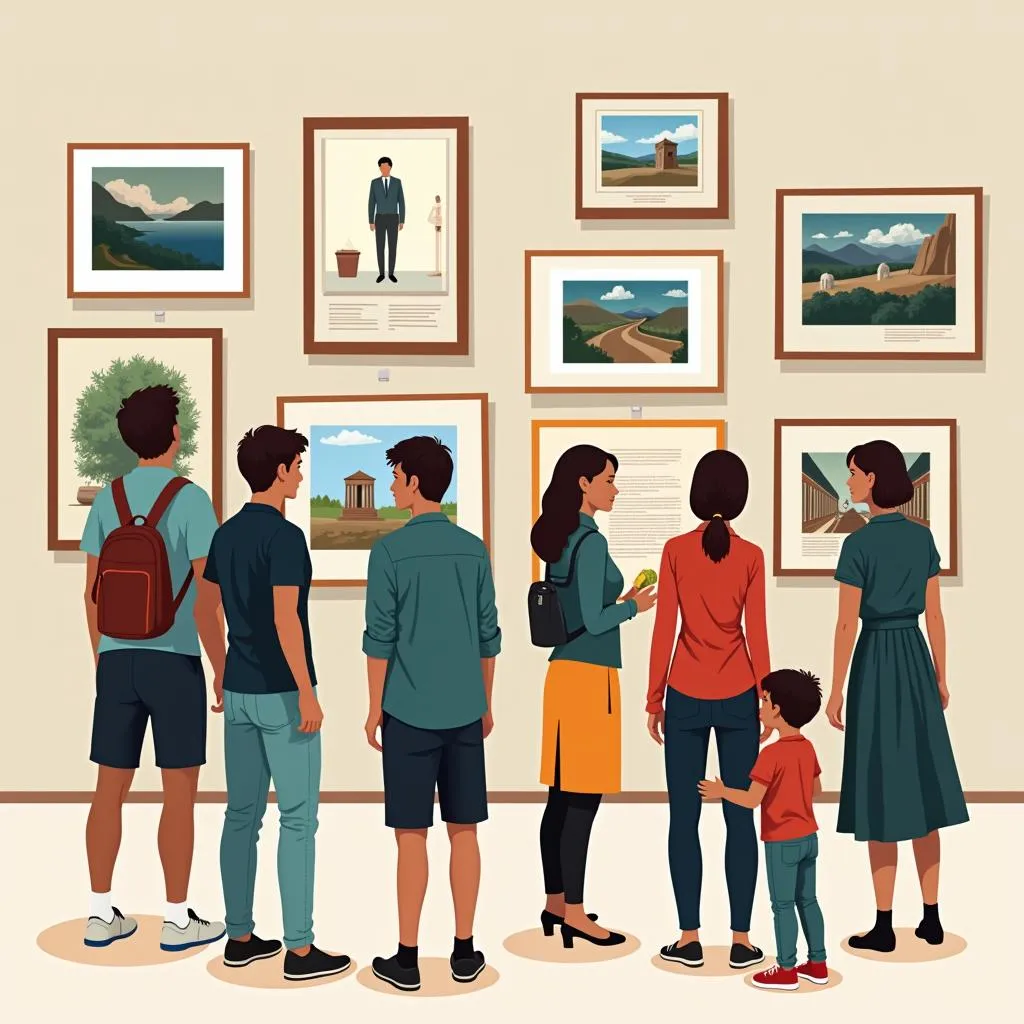Museum Art Signage: A Guide to Engaging Visitors
Museum Art Signage plays a crucial role in enhancing visitor experience by providing context, information, and guidance. Effective signage helps visitors navigate the museum, understand the artwork, and connect with the exhibits on a deeper level.
The Importance of Effective Museum Art Signage
Imagine standing in front of a captivating sculpture, but having no information about its creator, materials, or historical significance. This scenario highlights the importance of well-designed museum art signage.
Effective signage serves multiple purposes:
- Provides Context: It offers background information about the artist, the artwork’s creation, and its historical relevance.
- Enhances Understanding: Signage explains complex concepts, techniques, and symbolism, making the artwork more accessible to a wider audience.
- Guides Navigation: Clear wayfinding signage ensures visitors can easily find their way around the museum and locate specific exhibits.
- Encourages Engagement: Interactive displays, multimedia elements, and thought-provoking questions can deepen visitor interaction and create memorable experiences.
Types of Museum Art Signage
Museums utilize a variety of signage to cater to different needs and learning styles. These include:
- Labels: Concise descriptions placed next to artworks, typically including the title, artist, year of creation, and materials.
- Wall Texts: Longer, more detailed explanations that provide broader context about an artist, art movement, or historical period.
- Interactive Displays: Touchscreens, audio guides, and multimedia presentations offer interactive learning experiences and cater to different learning preferences.
- Wayfinding Signage: Directional signs, maps, and floor plans guide visitors through the museum and help them locate specific exhibits or amenities.
Best Practices for Museum Art Signage
To maximize impact and engagement, museum art signage should adhere to the following best practices:
Clarity and Conciseness:
- Use clear, legible fonts: Opt for fonts that are easy to read from a distance.
- Write in plain language: Avoid jargon and technical terms that may be unfamiliar to the general public.
- Keep it brief: Visitors have limited attention spans, so convey information concisely.
Visual Appeal:
- Use high-quality images: Incorporate visuals that complement the artwork and enhance understanding.
- Employ a consistent design: Maintain a cohesive visual identity across all signage.
- Consider lighting and placement: Ensure signage is well-lit and positioned for optimal visibility.
Accessibility:
- Offer multilingual options: Cater to diverse audiences by providing translations in multiple languages.
- Consider visitors with disabilities: Use large print, braille, and audio descriptions to make information accessible to all.
 Du khách tham quan bảo tàng
Du khách tham quan bảo tàng
The Future of Museum Art Signage
As technology continues to evolve, museum art signage is also transforming. We can expect to see:
- Augmented Reality (AR) Experiences: Overlapping digital content onto the real world, providing interactive and immersive ways to explore artwork.
- Personalized Content: Signage that adapts to visitor preferences, offering tailored information based on their interests.
- Data-Driven Insights: Analyzing visitor engagement with signage to optimize its effectiveness and tailor future exhibits.
Conclusion
Museum art signage is an essential component of the visitor experience, providing context, enhancing understanding, and fostering engagement. By embracing best practices and exploring new technologies, museums can create signage that is not only informative but also engaging and memorable. Investing in well-designed signage is an investment in enriching the cultural experience for all visitors.



